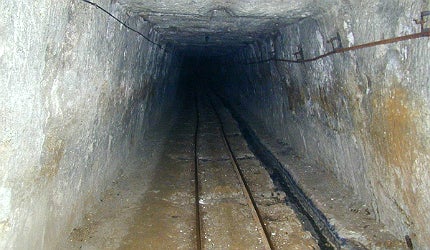

China’s commodities boom has meant mining companies are under pressure to produce more fuel to meet the growing needs of its hungry manufacturing industry. While the country’s rich resources boast opportunities for further economic growth, its mines, in particular its coal mines, suffer from poor safety standards which have resulted in numerous fatalities.
How well do you really know your competitors?
Access the most comprehensive Company Profiles on the market, powered by GlobalData. Save hours of research. Gain competitive edge.

Thank you!
Your download email will arrive shortly
Not ready to buy yet? Download a free sample
We are confident about the unique quality of our Company Profiles. However, we want you to make the most beneficial decision for your business, so we offer a free sample that you can download by submitting the below form
By GlobalDataChina’s appalling mining death rate
This month, on 25 September, an accident in Gansu province left 20 miners dead and 14 injured. The cable of a rail carriage taking workers down into the mine snapped, sending 34 miners plummeting into the pit.
Just one month ago, in August, a gas explosion at Xiaojiawan coal mine in Sichuan province killed forty-five people, injured fifty-four and left one person missing. Official Chinese news sources were quick to report that poor management was to blame, and an initial investigation has uncovered a malfunctioning ventilation system, missing gas sensors and that the mine had been exceeding its production capacity, violating safety standards.
The explosion is not an isolated incident. A total of 76 people have been killed in three Chinese coal-mining accidents since mid-August this year, according to reports by the State Administration of Work Safety. Furthermore, China’s coal pits claim the lives of thousands of miners each year, despite the existence of legislation to prevent accidents and fatalities from occurring.
Following the accident at the Xiaojiawan mine, the State Administration of Work Safety (SAWS) has vowed to close poorly managed small coa lmines, urging local governments to take stricter measures to ensure safety. However, this is not the first claim of its kind. Laws dating back to 2000 state detailed provisions and measures should be in place to safeguard mining operations, including the need for inspection and protecting the safety and health of mine workers.
Special provisions to prevent coal mine accidents were also drawn up by Chinese authorities in 2005, to identify and eliminate hazards to ensure the preservation of life. The State Administration of Coal Mine Safety must carry out safety inspections and all mines should set up special safety groups, equipped with full-time safety inspection personnel, who are responsible for daily inspections.
Simultaneously mine managers are obliged to report safety standards to workers and staff, and accept any supervision by trade unions. These rules have not been enough, however, to avert hundreds of accidents. Following the explosion at the Xiaojiawan mine, the head of the State Administration of Work Safety, Yang Dongliang, criticised the mine company’s "disorderly management", a problem affecting many of China’s private mines.
Visible leadership is required to prevent future disasters
Speaking exclusively to Mining-technology.com, health and safety director at the International Council on Mining and Metals (ICMM), Rene Aguilar, thinks the issue of poor management practices needs addressing. "Health and safety practices in China, like in all parts of the world, are evolving at an uneven rate."
He believes complying with state regulation is not sufficient, mining companies must also adopt their own safety rules: "Companies need to, at a minimum, implement the practices that the government lists as mandatory. They also have a responsibility to go further and develop systems that can help them on their way to zero harm. In order to implement those systems, miners must take into consideration the kind of operation they have, the magnitude of risks they face and what standards they need to address those risks".
Aguilar believes a key factor in developing efficient systems is through visible leadership, which puts human behaviour at the heart of good practice. He adds that supervisors and workers need to implement good practices on site, every single day.
"They must realize how this protects their own life and their teams; demonstrating that no shortcuts to the standards are accepted since they can cause incidents, accidents and even the death of someone in the team," he explains.
Jill Joyce, senior policy and research advisor at the Institution of Occupational Safety and Health, believes that aside from implementing new technology to boost safety, critical hazard detection also includes managing systems and "active monitoring", which are processes designed to prevent accidents, rather than putting controls in place following an accident.
The ICMM says it is working with global companies on developing "leading indicators", which are measurable, predictable and believable factors that can help a company address real risks before an accident occurs.
Changing management culture
While effective management at mine sites is important, the role of the authorities in enforcing stricter safety conditions across its mining industry will be vital to ensuring a rise in safety standards. According to Joyce, Chinese authorities have been striving to cut fatality rates and improve conditions at mines for many years. She conducts seminars and training sessions with Chinese delegations seeking advice on best practice and UK safety standards, considered to be some of the best in the world.
"The representatives from government organisations are desperate to find ways to reduce fatalities because they have a terrible record of mine safety," Joyce says. While the intention may be there, the crucial issue of changing cultural ideas about safety practices and their importance is the key to permanent change. "It’s about instilling a safety culture," Joyce says.
Aguilar agrees and goes further to suggest that a multifaceted approach is the best way to change the situation, but admits this could take a while yet. "Mining companies have come a long way in addressing the safety of their workers, but we recognize that much needs to be done still. This includes multistakeholder collaboration at the local, regional, national and global levels. The mining industry has to collaborate with regulators and communities to ensure that every miner comes home to their family at night," he says.
As with any industry, profit is crucial, but unlike most industries, miners put their lives at great risk and more value must be placed on human life to bring about the change necessary to avert disasters and fatalities in the future.
"Profit is really important everywhere and we are always battling to say good health and safety can save you money. Try having an accident; that is expensive. If companies added it all up properly they would find its worth investing in safety," Joyce says.
Related content
The world’s worst mining disasters
Explosions, strikes and collapses have caused some of the worst mining tragedies in recent years.
Supply and demand: Australia’s mining labour crisis
Australia’s mining boom is in danger of stalling as the industry struggles to recruit workers with specialist skills.
Mining security – opening up Latin America
Mining in Latin America is no stranger to violent protests or paramilitary conflict.




